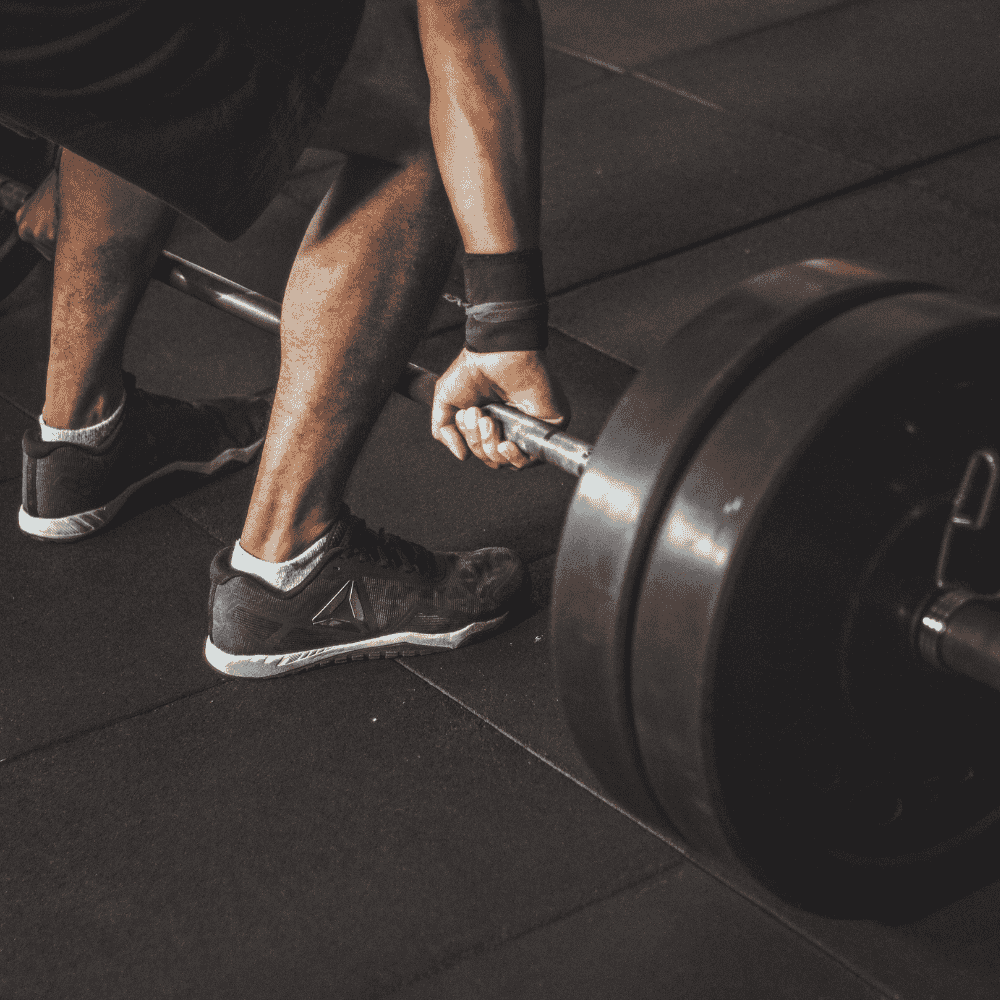Kettlebells have surged in popularity in recent years, transitioning from a niche fitness tool to a cornerstone of both home workouts and gym routines.
But what exactly makes kettlebells so appealing?
This article explores the myriad benefits of kettlebells, their effectiveness for various fitness goals, and why they might just be the perfect addition to your fitness regimen.
The Rise of Kettlebells
What Are Kettlebells?
Kettlebells are cast iron or steel weights shaped like a cannonball with a handle on top.
This design allows for a wide range of exercises that engage multiple muscle groups.
Unlike traditional dumbbells, the unique shape of kettlebells enables dynamic movements, which can enhance strength, endurance, flexibility, and coordination.

A Brief History of Kettlebells
Kettlebells originated in Russia in the 18th century.
Initially used as counterweights for measuring grain, their effectiveness for strength training was quickly recognised.
They became a staple in Russian military training, and over time, kettlebells gained popularity worldwide, becoming a favoured tool in both personal and group fitness settings.
The Popularity Surge
In recent years, kettlebells have seen a resurgence in fitness culture, especially with the rise of home workouts.
As people sought effective ways to exercise at home during the pandemic, kettlebells became a sought-after piece of equipment for their versatility and space efficiency.
Why Kettlebells Are Good for You
Kettlebells offer a multitude of benefits that can enhance your fitness journey.
Here are some key reasons why kettlebells are a great addition to your workout routine:
1. Full-Body Workout
Kettlebells provide a comprehensive full-body workout that targets multiple muscle groups simultaneously.
Exercises like swings, snatches, and cleans engage your arms, legs, core, and back.
This efficient use of muscle groups makes kettlebell workouts highly effective for building overall strength and endurance.
Example Exercises
- Kettlebell Swings: Engage the posterior chain (glutes, hamstrings, back) and provide a cardiovascular workout.
- Goblet Squats: Work the legs and core while improving squat form.
- Kettlebell Deadlifts: Target the hamstrings, glutes, and lower back.
2. Functional Strength Training
Kettlebell training mimics real-life movements, making it a form of functional strength training.
By incorporating exercises that reflect daily activities, kettlebells help improve your functional strength, enhancing your ability to perform everyday tasks with ease.
This is particularly beneficial for athletes, active individuals, and those looking to improve their quality of life.
Why Functional Strength Matters
Functional strength involves using strength gained in the gym to enhance everyday activities.
For instance, lifting heavy groceries or playing with your children can become easier with improved functional strength.
3. Versatility and Variety
One of the significant advantages of kettlebells is their versatility.
They can be used for a wide range of exercises, from strength training to cardio workouts.
Whether you're performing kettlebell swings, goblet squats, or Turkish get-ups, there’s no shortage of exercises to keep your routine fresh and exciting.
Creative Workout Ideas
- Kettlebell Circuit Training: Combine different kettlebell exercises into a circuit for a comprehensive workout.
- Kettlebell HIIT: High-Intensity Interval Training using kettlebells can be a fun and challenging way to burn fat.
- Kettlebell Flow: Create a series of movements that flow into each other for a dynamic workout.
4. Space-Efficient
Kettlebells are compact and space-efficient, making them ideal for home workouts.
You can easily store them in a small space, unlike bulky gym equipment.
With just one or two kettlebells, you can perform an extensive range of exercises, maximising your workout potential without needing a full gym setup.

Perfect for Home Gyms
If you’re limited on space, kettlebells can fit under a bed or in a closet, allowing for easy storage while still being accessible for daily workouts.
5. Suitable for All Fitness Levels
Kettlebells are incredibly versatile and can be adapted to suit any fitness level.
Whether you’re a beginner or an experienced athlete, you can tailor your workouts to meet your specific needs.
Starting with lighter weights and gradually increasing the load allows you to progress at your own pace.
Beginner-Friendly Tips
- Start with Lighter Weights: As a beginner, choose a kettlebell weight that allows you to maintain proper form.
- Focus on Technique: Prioritise mastering the movements before increasing the weight.
What Are Kettlebell Swings Good For?
Overview of Kettlebell Swings
Kettlebell swings are one of the most popular kettlebell exercises.
They involve swinging the kettlebell between your legs and then thrusting it forward to shoulder height.
This movement not only engages your muscles but also elevates your heart rate, making it an excellent exercise for strength and cardio.
Benefits of Kettlebell Swings
- Cardiovascular Endurance: Kettlebell swings elevate your heart rate, making them an effective cardiovascular workout. They help improve your aerobic capacity and endurance over time.
Fat Loss: The combination of strength training and cardio in kettlebell swings makes them an effective exercise for fat loss. The high-intensity nature of the workout burns calories both during and after the exercise.
Core Strength: Kettlebell swings require significant core engagement. As you swing the kettlebell, your core muscles stabilise your body, leading to improved core strength over time.
Posterior Chain Development: Kettlebell swings primarily target the posterior chain, which includes muscles like the glutes, hamstrings, and lower back. Strengthening these muscles is essential for overall strength and posture.
Improved Hip Hinge Mechanics: The hip hinge is a fundamental movement pattern used in many exercises and daily activities. Kettlebell swings help reinforce proper hip hinge mechanics, reducing the risk of injury during other movements.
Incorporating Kettlebell Swings into Your Routine
To effectively incorporate kettlebell swings into your workout routine, consider the following tips:
- Start with a Warm-Up: Always begin with a proper warm-up to prepare your muscles and joints for the workout.
- Focus on Form: Ensure proper form to maximise benefits and minimise injury risk. Engage your core and keep your back straight during the swing.
- Gradually Increase Weight: Start with a manageable weight and gradually increase it as you become more comfortable with the movement.
- Combine with Other Exercises: Kettlebell swings can be part of a larger workout routine. Combine them with other kettlebell exercises for a full-body workout.
Sample Kettlebell Swing Workout
- Warm-Up: 5-10 minutes of dynamic stretching or light cardio.
- Kettlebell Swings: 3 sets of 15-20 repetitions.
- Rest: 30-60 seconds between sets.
- Finisher: 5 minutes of alternating kettlebell swings and bodyweight exercises (e.g., push-ups or burpees).
Are Kettlebells Good for Fat Loss?
The Role of Kettlebells in Fat Loss
Kettlebells can play a significant role in fat loss, thanks to their unique ability to combine strength training and cardiovascular workouts.
By engaging multiple muscle groups and elevating your heart rate, kettlebell exercises create a caloric deficit, which is essential for fat loss.
High-Intensity Workouts
Kettlebell training often involves high-intensity workouts, which are effective for burning calories and fat.
High-intensity interval training (HIIT) using kettlebells can maximise fat-burning potential, as these workouts push your body to its limits.
Afterburn Effect
One of the key benefits of kettlebell workouts is the afterburn effect, also known as excess post-exercise oxygen consumption (EPOC).
After an intense kettlebell workout, your body continues to burn calories as it recovers.
This means that you can burn more calories even after your workout has ended.
Combining Kettlebells with Cardio
To enhance fat loss, consider combining kettlebell workouts with cardiovascular exercises.
For example, alternate between kettlebell swings and short bursts of cardio, such as jumping jacks or burpees.
This combination will keep your heart rate elevated and increase your overall calorie expenditure.
Sample Kettlebell Fat Loss Workout
- Warm-Up: 5-10 minutes of light jogging or jumping rope.
-
Circuit: Perform each exercise for 30 seconds, resting for 15 seconds between exercises. Repeat the circuit 3 times.
- Kettlebell Swings
- Kettlebell Goblet Squats
- Mountain Climbers
- Kettlebell Deadlifts
- Burpees
- Cool Down: 5-10 minutes of stretching to aid recovery.

Are Kettlebells Good for Building Muscle?
Kettlebells and Muscle Building
Kettlebells are not only effective for fat loss but also for building muscle.
The resistance provided by kettlebells allows you to perform strength-training exercises that can lead to muscle hypertrophy (growth).
Compound Movements
Many kettlebell exercises are compound movements, meaning they engage multiple muscle groups simultaneously.
This leads to more significant muscle activation and growth.
For example, exercises like kettlebell cleans and snatches work your arms, shoulders, core, and legs all at once.
Progressive Overload
To build muscle effectively, you need to challenge your muscles consistently.
Kettlebells are excellent for progressive overload; you can gradually increase the weight of the kettlebell or the number of repetitions as you become stronger.
Sample Kettlebell Muscle-Building Workout
- Warm-Up: 5-10 minutes of dynamic stretching focusing on major muscle groups.
-
Workout: Perform 3-4 sets of 8-12 repetitions for each exercise.
- Kettlebell Deadlifts
- Kettlebell Rows
- Kettlebell Shoulder Press
- Kettlebell Goblet Squats
- Kettlebell Lunges
- Cool Down: 5-10 minutes of static stretching to promote recovery.

Are Kettlebells Good for Weight Loss?
Kettlebells and Weight Loss
Kettlebells can be a powerful tool for weight loss.
By combining strength training and cardiovascular benefits, kettlebell workouts can help you achieve a caloric deficit, which is essential for losing weight.
High-Calorie Burn
Kettlebell exercises can burn a significant number of calories in a relatively short amount of time.
The combination of strength and cardio training increases your heart rate and metabolism, allowing you to maximise your calorie burn during and after your workout.
Consistency and Lifestyle
While kettlebells can aid weight loss, consistency and lifestyle choices are critical.
Regular workouts combined with a balanced diet will yield the best results.
Incorporating kettlebells into your routine can create a sustainable and enjoyable workout regimen.
Tips for Using Kettlebells for Weight Loss
- Mix It Up: Incorporate a variety of kettlebell exercises to keep your workouts fresh and engaging.
- Combine with Cardio: Pair kettlebell workouts with cardiovascular exercises to maximise your calorie burn.
- Stay Consistent: Aim for at least three kettlebell workouts per week to see significant weight loss results.
Sample Kettlebell Weight Loss Workout
- Warm-Up: 5-10 minutes of light cardio (jogging, jumping jacks).
-
Circuit: Perform each exercise for 30 seconds, resting for 15 seconds between exercises. Repeat the circuit 3 times.
- Kettlebell Swings
- Kettlebell Snatches
- Kettlebell Russian Twists
- Jump Squats
- Kettlebell Lateral Lunges
- Cool Down: 5-10 minutes of stretching to help with recovery.
Are Kettlebells Good for Abs?
The Role of Kettlebells in Core Training
Kettlebells are excellent for strengthening the core and developing abdominal muscles.
Many kettlebell exercises require core engagement, making them effective for building stability and strength in the abdominal region.
Core Engagement
When performing kettlebell exercises, your core muscles work to stabilise your body.
This engagement is especially prevalent in dynamic movements such as swings and cleans.
Over time, consistent kettlebell training can lead to improved core strength and definition.
Effective Kettlebell Exercises for Abs
- Kettlebell Russian Twists: Sit on the ground, lean back slightly, and rotate the kettlebell from side to side to engage your obliques.
- Kettlebell Plank Rows: In a plank position, row the kettlebell towards your hip, engaging your core to maintain stability.
- Kettlebell Turkish Get-Ups: This complex movement engages multiple muscle groups, including the core, helping to build strength and stability.
Sample Kettlebell Core Workout
- Warm-Up: 5-10 minutes of dynamic stretching, focusing on the torso and hips.
-
Core Circuit: Perform each exercise for 30 seconds, resting for 15 seconds between exercises. Repeat the circuit 3 times.
- Kettlebell Russian Twists
- Kettlebell Plank Rows
- Kettlebell Side Bends
- Kettlebell Dead Bugs
- Cool Down: 5-10 minutes of stretching to promote recovery.
Are Kettlebells Good for Toning?
Toning with Kettlebells
Toning refers to the process of increasing muscle definition while reducing body fat.
Kettlebells are an excellent tool for toning because they promote muscle growth and fat loss simultaneously.
Full-Body Toning
Kettlebell workouts are inherently full-body exercises.
By engaging multiple muscle groups, kettlebells help tone various areas of your body, including your arms, legs, and core. Incorporating a variety of kettlebell exercises into your routine ensures a balanced approach to toning.
Circuit Training for Toning
Consider incorporating kettlebell circuit training into your workouts.
This method involves performing a series of exercises with minimal rest in between, keeping your heart rate elevated while targeting different muscle groups.
Circuit training can maximise toning results and enhance cardiovascular fitness.
Consistency is Key
To achieve the best toning results, consistency is crucial.
Aim to incorporate kettlebell workouts into your routine several times a week.
Pairing these workouts with a balanced diet will further support your toning goals.
Sample Kettlebell Toning Workout
- Warm-Up: 5-10 minutes of dynamic stretching.
-
Toning Circuit: Perform each exercise for 30 seconds, resting for 15 seconds between exercises. Repeat the circuit 3 times.
- Kettlebell Swings
- Kettlebell Goblet Squats
- Kettlebell Push Press
- Kettlebell Romanian Deadlifts
- Cool Down: 5-10 minutes of stretching to aid recovery.

Are Kettlebells Good for Beginners?
Kettlebells and Beginners
Kettlebells are an excellent choice for beginners due to their versatility and adaptability.
They offer a wide range of exercises that can be tailored to suit any fitness level, making them ideal for those just starting their fitness journey.
Starting Slow
For beginners, it’s essential to start slowly and focus on proper form.
Begin with lighter weights to get comfortable with the movements before progressing to heavier kettlebells.
This approach will help you build confidence and reduce the risk of injury.
Instruction and Guidance
If you’re new to kettlebell training, consider seeking instruction from a certified trainer or following online workout videos.
Proper guidance ensures that you learn the correct techniques and can safely progress in your kettlebell workouts.
Building a Foundation
Kettlebell training can help beginners build a solid foundation for fitness.
As you develop strength, endurance, and coordination, you’ll be better prepared to tackle more challenging workouts in the future.
Tips for Beginners
- Choose the Right Weight: Start with a kettlebell weight that allows you to maintain proper form throughout the exercises.
- Focus on Form: Prioritise mastering the movements before increasing the weight.
- Start with Basic Exercises: Begin with foundational exercises like kettlebell swings, goblet squats, and deadlifts.
- Stay Consistent: Aim to incorporate kettlebell workouts into your routine regularly for the best results.
Sample Kettlebell Beginner Workout
- Warm-Up: 5-10 minutes of light cardio or dynamic stretching.
-
Beginner Circuit: Perform each exercise for 30 seconds, resting for 30 seconds between exercises. Repeat the circuit 2-3 times.
- Kettlebell Swings
- Kettlebell Goblet Squats
- Kettlebell Deadlifts
- Kettlebell Shoulder Press (light weight)
- Cool Down: 5-10 minutes of stretching to help with recovery.
Conclusion: Are Kettlebells Good for You?
In conclusion, kettlebells are an incredibly effective and versatile fitness tool that can benefit individuals of all fitness levels.
Whether your goal is fat loss, muscle building, core strengthening, or toning, kettlebells can help you achieve your fitness aspirations.
At Kefl, we offer a wide range of kettlebells for home workouts, catering to all levels of fitness.
Explore our selection and find the perfect kettlebell to complement your workout routine.
Start your fitness journey today with Kefl and experience the numerous benefits of kettlebell training!









